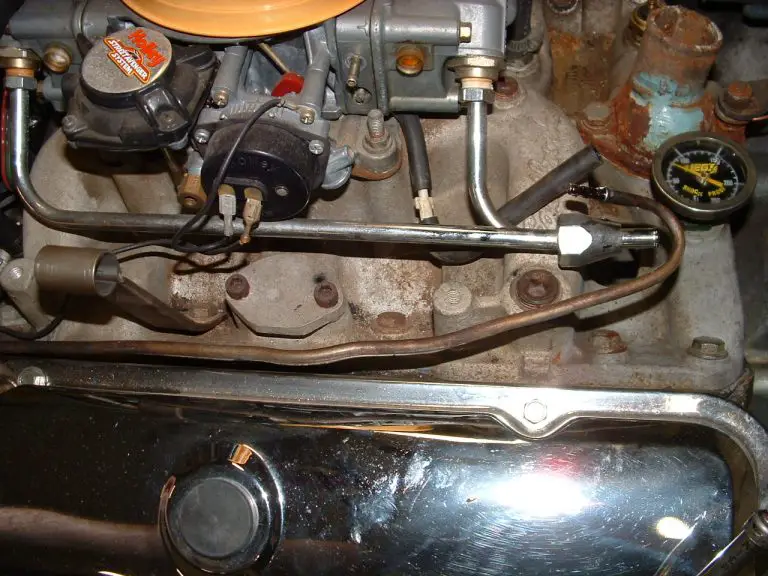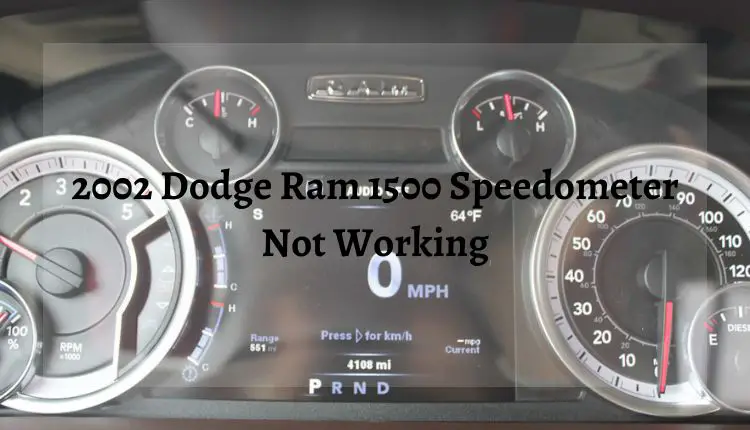How to Reset Steering Angle Sensor Without Scanner – Easy Tips
In today’s increasingly sophisticated vehicles, the steering angle sensor plays a critical role in ensuring the safety and performance of your driving experience. It is an essential component of your car’s electronic stability control system, and when it malfunctions,
it can lead to a host of issues, from reduced handling to possible accidents. “The Ultimate Guide to Resetting Your Steering Angle Sensor Without a Scanner” aims to empower you,
the vehicle owner, with the knowledge and skills required to tackle this essential maintenance task without the need for expensive scanning tools. In this comprehensive guide, we will explore the intricacies of the steering angle sensor,
Provide a step-by-step walkthrough of the reset process, and equip you with alternative methods and troubleshooting tips to ensure your sensor is functioning optimally, keeping you safe and in control on the road.
When is it Necessary to Reset Your Steering Angle Sensor?
There are several situations when it may become necessary to reset your steering angle sensor. These scenarios typically involve circumstances that could cause the sensor to provide inaccurate readings or trigger the malfunction indicator light on your dashboard. Some common reasons for resetting the steering angle sensor include:
Alignment and suspension work:
After having your vehicle’s wheels aligned or suspension components replaced, the steering angle sensor may require recalibration to ensure accurate readings and optimal performance of the electronic stability control system.
Steering component replacement:
If you have recently replaced any steering-related components, such as the steering rack, tie rods, or power steering pump, the steering angle sensor may need to be reset to adapt to the new parts and restore accurate readings.
Battery disconnection or replacement:
Disconnecting or replacing your vehicle’s battery can sometimes cause the steering angle sensor to lose its calibration, necessitating a reset to restore proper function.
Malfunction Indicator Light (MIL):
If the malfunction indicator light, also known as the check engine light or warning light, illuminates your dashboard with a code related to the steering angle sensor, a reset may be required to clear the error and restore normal operation.
- Honda Pilot Vtm-4 Check Engine Light
Sensor malfunction symptoms:
If you experience issues such as poor handling, traction control problems, or your vehicle’s electronic stability control system not functioning correctly, resetting the steering angle sensor could potentially resolve these problems.
After an accident:
If your vehicle has been involved in an accident or a significant impact that may have affected the alignment or suspension, it is essential to reset the steering angle sensor to ensure accurate readings and maintain safety on the road.
Keep in mind that while resetting the steering angle sensor may resolve some issues, it is not always a guaranteed fix. If the problem persists after resetting the sensor, you may need to consult a professional mechanic for further diagnosis and repair.
Why Reset Steering Angle Sensor Without a Scanner?
Resetting the steering angle sensor without a scanner offers numerous advantages for vehicle owners, especially those who prefer a more hands-on approach to maintenance and repairs. While professional scanners and diagnostic tools can be quite useful, they often come with a hefty price tag, making them less accessible to the average car owner.
By learning how to reset the steering angle sensor without a scanner, you not only save money on expensive equipment but also gain a deeper understanding of your vehicle’s intricate systems and components.
Moreover, resetting the sensor without a scanner allows you to perform the task at your convenience, eliminating the need to schedule an appointment with a mechanic or wait for their availability. This self-sufficiency can be especially beneficial in situations where a quick fix is needed, such as before a long trip or when an issue arises unexpectedly.
It is worth noting that knowing how to reset the sensor manually can also be a valuable skill when dealing with older vehicles that may not be compatible with modern scanning tools.
Additionally, mastering this skill can boost your confidence in handling other vehicle maintenance tasks, making you more self-reliant and knowledgeable about your car’s needs.
Ultimately, learning how to reset the steering angle sensor without a scanner is a practical and cost-effective way to maintain your vehicle’s safety and performance, ensuring a smooth and enjoyable driving experience.
5 Steps Resetting the Steering Angle Sensor Without a Scanner
Here is a step-by-step guide to reset your steering angle sensor without a scanner. Please note that this procedure may vary slightly depending on your vehicle’s make and model, so it is essential to consult your owner’s manual or a professional mechanic if you are unsure.
Disconnect the battery:

Before working on any electrical components of your vehicle, disconnect the negative battery terminal to prevent accidental short circuits and protect yourself from potential electrical hazards. Make sure to have your vehicle’s radio code or any other security features handy, as disconnecting the battery may require the reactivation of these systems.
Locate the steering angle sensor:
The steering angle sensor is typically located within the steering column or on the steering rack, depending on your vehicle. Consult your owner’s manual or a repair guide to identify the precise location of the sensor in your car.
Reset the sensor using the manual method:
Turn the steering wheel to its limits:
With the engine off, turn the steering wheel all the way to the left until it reaches the stop, then turn it all the way to the right until it reaches the stop again. Repeat this process two or three times to ensure that the sensor registers the full range of motion.
Align the steering wheel to the center position:
Carefully turn the steering wheel back to the center position, ensuring that the wheels are also straight. This step is crucial for accurate sensor readings and maintaining the vehicle’s stability control system.
Cycle the ignition switch:

Turn the ignition key to the “ON” position without starting the engine. Wait for a few seconds, allowing the electronic systems to initialize. Next, turn the ignition key back to the “OFF” position, and repeat this process two or three times to complete the reset procedure.
Reconnect the battery:

Reattach the negative battery terminal and tighten it securely. Reactivate any security features, such as the radio code or vehicle alarm system, if necessary.
Verify sensor functionality:
Start the engine and take your vehicle for a test drive. Pay attention to the handling, steering response, and stability control system to ensure that the steering angle sensor is functioning correctly. If the malfunction indicator light (MIL) was previously illuminated, check to see if it has been cleared.
Remember, it is essential to consult your vehicle’s owner’s manual or a professional mechanic if you have any doubts or concerns about resetting the steering angle sensor without a scanner. This guide is meant as a general overview, and the specific process may vary depending on the make and model of your vehicle.
Expert Tips for Maintaining Your Steering Angle Sensor
I can provide you with several tips to help maintain your steering angle sensor and ensure its optimal performance. By following these guidelines, you can reduce the risk of sensor malfunction and prolong its lifespan:
Regular inspections:
Periodically check your steering angle sensor for any signs of damage, wear, or corrosion. This includes inspecting the wiring and connectors for any loose or damaged connections, which could affect the sensor’s performance.
Clean the sensor:
Depending on your vehicle’s make and model, you may be able to access the steering angle sensor to clean it gently. Use a soft brush or compressed air to remove any accumulated dirt, dust, or debris that could interfere with the sensor’s operation.
Perform wheel alignments:
Regular wheel alignments help maintain the proper orientation of your vehicle’s wheels and suspension components. This, in turn, ensures that the steering angle sensor functions correctly and provides accurate readings.
Replace worn suspension and steering components:
Over time, your vehicle’s suspension and steering components may wear out or become damaged. Inspect these parts regularly and replace them as needed to maintain the steering angle sensor’s accuracy and your car’s overall handling performance.
Avoid overloading your vehicle:
Excess weight on your vehicle can put additional stress on the suspension and steering systems, potentially affecting the steering angle sensor’s performance. Always follow the manufacturer’s guidelines for your vehicle’s weight capacity.
Address issues promptly:
If you notice any signs of the steering angle sensor malfunction, such as a warning light or handling issues, address the problem as soon as possible. Ignoring the issue may lead to more severe problems, including damage to other components.
Be cautious when jump-starting your vehicle:
Incorrect jump-starting procedures can cause electrical surges that may damage the steering angle sensor or other electronic components. Follow the proper jump-starting procedure outlined in your owner’s manual to avoid potential damage.
Consult a professional mechanic:
If you are unsure about any aspect of maintaining or repairing your steering angle sensor, consult a professional mechanic for guidance. They can provide expert advice and help ensure that your vehicle remains safe and reliable on the road.
By following these expert tips, you can help maintain your steering angle sensor and ensure that it continues to function correctly, providing you with a safer and more enjoyable driving experience.

Frequently Asked Questions
What happens if the steering angle sensor is not reset?
Additionally, the sensor may also cause problems with other systems in your vehicle, such as the traction control or ABS. It is crucial to have the sensor reset if you have replaced any steering components or if the sensor has been triggered by an accident to ensure that all of your vehicle’s systems are functioning correctly and that you can drive safely.
How do you calibrate the steering angle sensor?
If you’re not comfortable doing this yourself, it’s best to seek professional help from a mechanic or auto technician who can ensure that the calibration is done correctly.
How do you manually reset a steering angle sensor?
However, some cars may require specific button combinations or sequences to reset the sensor manually. If you are unsure of how to perform this process, it is best to consult your car’s manual or a professional mechanic for guidance.
What does a steering wheel position sensor do?
Resetting the steering angle sensor without a scanner requires following a specific process, which may vary depending on your vehicle’s make and model. It’s best to consult your vehicle’s manual or a professional mechanic for guidance on how to reset the sensor properly.
HOW TO RESET THE STEERING ANGLE SENSOR.
Conclusion
In conclusion, understanding the importance of the steering angle sensor and mastering the skill of resetting it without a scanner is a valuable asset for any vehicle owner. By taking a proactive approach to maintaining this essential component, you can ensure the safety and performance of your vehicle while also saving time and money on expensive diagnostic equipment and professional services.
“The Ultimate Guide to Resetting Your Steering Angle Sensor Without a Scanner” has provided you with a comprehensive overview of the sensor’s function, the situations when a reset is necessary, a step-by-step guide for the reset process, alternative methods, troubleshooting tips, and maintenance advice.
With this knowledge, you are better equipped to handle steering angle sensor-related issues and maintain your vehicle’s electronic stability control system effectively.
See Also:





